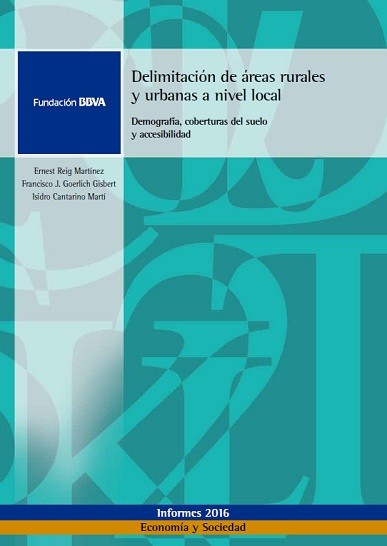
PublicationReports
Delimitación de áreas rurales y urbanas a nivel local
Demografía, coberturas del suelo y accesibilidad
This report aims to establish a typology of Spanish urban/rural spaces more complete and detailed than can be obtained using traditional criteria, which grant a decisive importance to population density as a differentiating dimension. Using geographical information systems (GIS), and in line with the recent European literature, we emphasize the need to integrate at least two other dimensions: the intensity of human intervention in the territory, measured by the prevailing type of soil coverage, and the degree of accessibility from rural municipalities to cities.
We put forward a typological proposal that includes six different types of municipalities: urban and intermediate open and closed municipalities (according to land cover), and accessible and remote rural communities. A land-use-based classification does not discriminate enough between rural municipalities, just as, by definition, the accessibility dimension does not affect urban municipalities.
We find that 88% of Spanish municipalities are rural and open, while only 2% are urban and closed, and that 58% of rural municipalities can be deemed accessible. Remote rural municipalities represent the remaining 42.2% of rural municipalities, housing 30% of the total rural population, about 2 million people. The average travel time separating them from the nearest town is 66 minutes. Also, it has been found that there is a significant level of heterogeneity at the provincial level in terms of the more or less remote nature of the corresponding rural areas.
